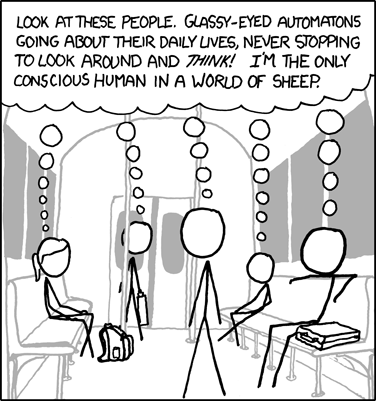If you sue your doctor for medical malpractice you can recover two basic types of damages: economic and non-economic damages. Economic damages are the out-of-pocket expenses incurred as a result of medical error. Your surgery bill, the funeral expenses for your loved one, or the lost wages resulting from you or a loved one missing work. The non-economic damage is the intangible amount that a Jury awards to compensate you for what the law calls “pain and suffering.” It is the hard to define (and often, anything but compensatory) amount of money that a jury thinks a life is worth. For better or worse “Justice” in the civil court system is measured in dollars and cents. And justice for medical negligence is, predictably, a whole lot of money, because why shouldn’t it be?
Well in California, those non-economic damages are capped. In the 1970’s the insurance lobby, alarmed at the high dollar value of cases brought against doctors for medical malpractice, successfully lobbied for a $250,000 cap on non-economic damages in medical malpractice cases, among other things. That basically means that insurance companies have decreed that your suffering, or the lost life of your loved one, is worth a set pre-determined amount of $250,000. This cap does not adjust for inflation. Just to give you an idea of what $250,000 got you in 1975: a gallon of gas was $0.50, the average cost of a new car was $4,250, average rent was $200, and the average cost of a new house was $39,300. Adjusted for inflation, $250,000 in 1975 is about $1,000,000 in 2014. Things are a little more expensive these days, but damages in medical malpractice cases will be $250,000 tomorrow, and they will be $250,000 in 2050. Does that sound fair?
Well it gets worse. Guess who is harmed the most by that cap? People whose damages are predominantly non-economic as opposed to economic. Let’s say for example that the current CEO of a Fortune 500 company is in a car crash and needs emergency brain surgery. Let’s say the doctor botches that surgery in some catastrophic, negligent way and the CEO dies. The CEO’s family can sue the doctor and the hospital for the amount of money that CEO was going to earn had he survived the procedure, which would have been a whole bunch of money. While the non-economic damages are capped at an arbitrary and unjust $250,000, the family is still able to sue for a large amount of money since their loved one was such a high earner, and since his high earning capacity is so easy to prove. The family will need to hire a lawyer to get it, but they won’t have any trouble doing that. The case has a predictable high dollar value, and the family might be able to afford to pay a lawyer by the hour anyway.
Now let’s say that instead of a CEO, it is a four year old child of a low income family. They can’t afford to hire an attorney by the hour. That means they need to hire a contingency lawyer who only gets paid once they win the case. The child, obviously, has no wage earning history. The economic damages are the cost of the medical procedures, funeral expenses, and other out of pocket expenses that an insurance company pays for anyway, and that the insurance company recovers back for itself as opposed to the family. The “non-economic” damages are capped at $250,000. And that isn’t a blank check that gets written out by the hospital, that’s a dollar amount that the insurance company will make a family fight tooth and nail for. Both the lawyer’s fee and often costs (often paid by the lawyer up front, since the client cannot afford it) have to come out of the recovery, and California puts strict limits on how much of the total judgment the lawyer gets. If a lawyer sinks $100,000 in costs into a trial (common in these cases), along with thousands of hours of their time over the course of a year or more, the attorney is still breaking even at best and probably losing money. And more importantly the client is only getting around half of the entire $250,000 judgment, after at least a year of grueling litigation. Not to mention that the Defense wins about 80% of these cases. In other words, an attorney is betting about $125,000-$150,000 of their own money with 20% odds just to break even in the best case scenario. How many lawyers are going to do that? How many clients are going to want to fight that battle?
That family thus might be getting nothing, because they will have a hard time getting an attorney to represent them in the first place, or they will find a good lawyer who is open and honest about their chances and what it will take mentally and physically to get there, and the family will decide that it isn’t worth it. Even a low hourly rate is out of reach, due to the huge amount of time necessary to try these cases , and the huge amount of costs incurred in witness fees and court expenses that a lawyer has little to no control over.
Eliminating the ability of contingency attorneys to make a living fighting for victims of medical negligence is exactly what the insurance companies intended. It helps their bottom line to deny justice to victims of medical malpractice. This is out of the corporate defense lobby playbook of denying access to the courthouse for regular people. If they don’t like the law, they prevent people from enforcing it. Like, for instance, mandatory consumer arbitration. This is unfair.
Although I do not practice medical malpractice litigation, I do practice employment law and I represent primarily low income Plaintiffs on a contingency basis, so this hits close to home for me. It’s an unfortunate fact that utilizing the court system in the United States costs a lot of money, but it does. The multiple reasons for that are beyond this blog post. Contingency attorneys are the keys to the courthouse for the vast majority of Americans without deep pockets who cannot afford to pay outrageously high court costs, or an attorney’s hourly fee.
Statistics bear this out. 71% of cases in California dealing with infants had their verdicts lowered to the $250,000 cap. 67% of elderly victims also had their verdicts lowered. Is it sound public policy to prevent families from recovering money for the preventable deaths of infants and the elderly? I don’t think so.
Here’s the deal with Prop 46. It basically adjusts that $250,000 cap to take inflation into account. In 1975 dollars, $250,000 is roughly $1,106,092.01. (Via BLS.gov.) Prop 46 thus raises the cap to $1,000,000. This will open the courthouse doors to young and elderly victims of medical negligence who are now shut out of the system. That’s why I support it.
Do not believe the ads saying this will raise your premiums, or cause doctors to leave California, or increase the use of “defensive medicine.” These claims have been studied (since caps have been around for a long time in various states) and they are wrong. Simply put, these caps serve one purpose: saving insurance companies money at the expense of victims.
A controversial part of the bill also calls for drug testing doctors. I am torn on this element of the bill. I get why they put it in there, but as a matter of principal I disagree with random drug testing. Ultimately, I think raising the cap is simply too important to vote no because of drug testing. It deeply saddens me to see colleagues in my line of work who are going to vote No because of it. I understand and respect their decision but I strongly disagree.
So vote YES on Prop 46 this November. It’s a Yes vote you will hopefully never need, but you or your family will be better off if you ever do.


Recent Comments